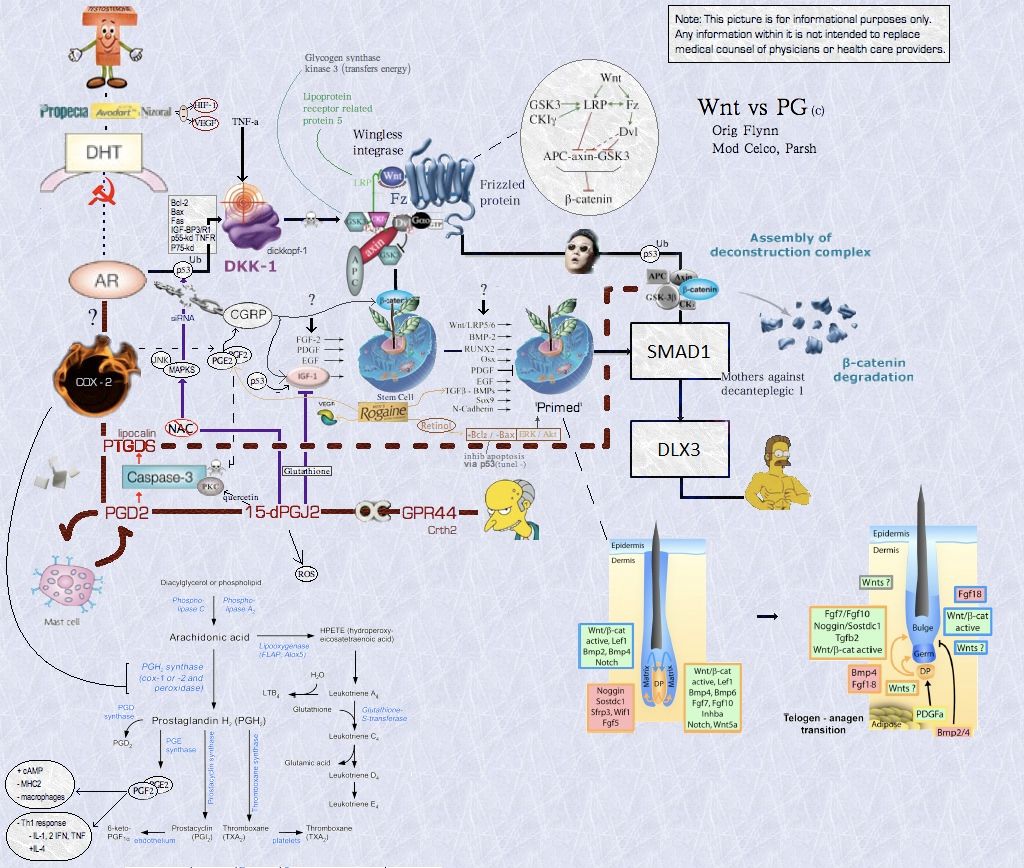This grafting, or adding fat stem cells to our 3D models are something that we think might improve inductivity. The latter is easier to achieve technically and in the clinic.
There are differences but we're hoping that the mix of various follicle cells in our models will point the fat cells towards a more follicle lineage.
There are differences but we're hoping that the mix of various follicle cells in our models will point the fat cells towards a more follicle lineage.


 . Well no wonder I guess given the above. By accident this molecule has been proven to be damn good at growing hair.
. Well no wonder I guess given the above. By accident this molecule has been proven to be damn good at growing hair. 
 . Again if we could only all put our head together to get more knowledge with the available information. Just look at what 3 people can do in a short matter of time by researching and discussing (diagram here above). I could go way more in depth about everything but that is not needed. My questions for you Aaron;
. Again if we could only all put our head together to get more knowledge with the available information. Just look at what 3 people can do in a short matter of time by researching and discussing (diagram here above). I could go way more in depth about everything but that is not needed. My questions for you Aaron; . Keep doing what you do it is awesome! Some day we'll have this cracked whatever way it will be.
. Keep doing what you do it is awesome! Some day we'll have this cracked whatever way it will be.
Comment